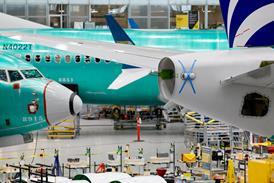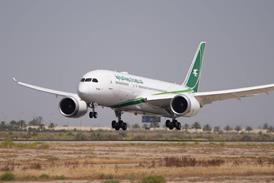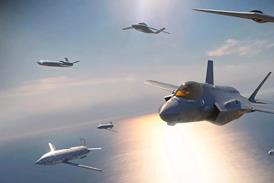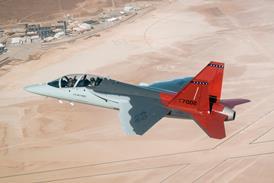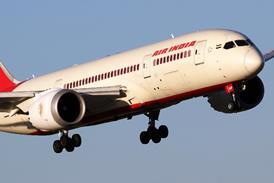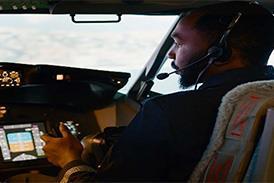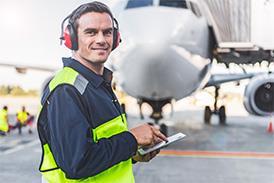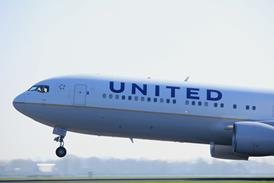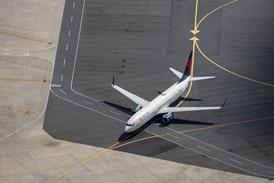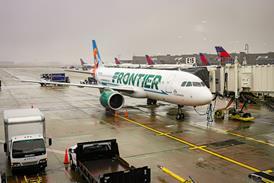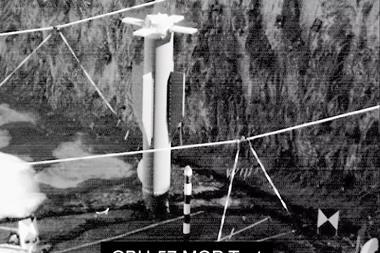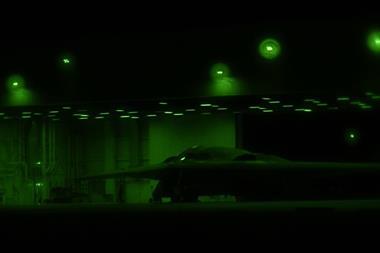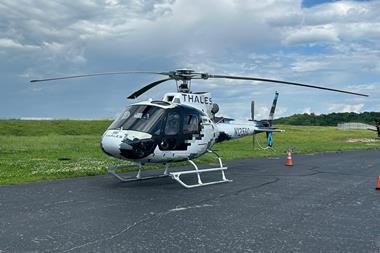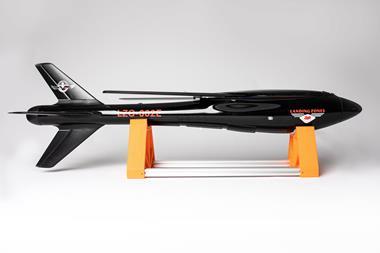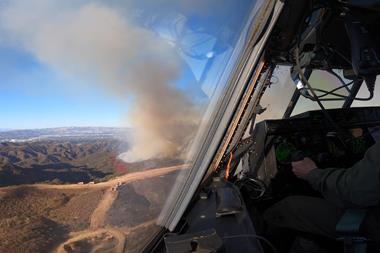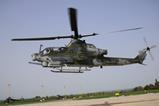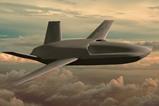The US Coast Guard (USCG) is now operating a Shield AI V-BAT unmanned aerial vehicle (UAV) in the Pacific after first deploying the aircraft operationally several months ago, marking a significant shift in the service’s aviation capabilities.
Black and white video released by the Coast Guard on 14 October shows a V-BAT tracking what the USCG describes as a “suspected smuggling vessel” located in the eastern Pacific Ocean.
A small boat can be seen cutting a wake through choppy water, before what appears to be a rotorcraft comes into frame, matching course above the vessel. Embedded data indicates the video was taken on 1 October.
The smuggling boat was successfully interdicted by the Coast Guard Cutter Midgett, according to the USCG.
“The V-BAT provides real-time intelligence, surveillance and reconnaissance – enhancing the Coast Guard’s ability to detect, monitor and stop illicit maritime activity before it reaches US shores,” the service says.
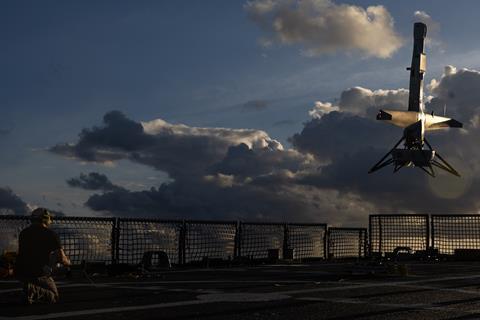
The operational deployment of UAS is a significant evolution for Coast Guard aviation operations, which have traditionally been focused on conventional rotorcraft (both ship- and land-based) and land-based fixed-wing patrol aircraft.
The service has been trialing uncrewed aircraft as far back as 2019, but in 2024 signed a $198 million contract with Shield AI for V-BATs in a contractor-owned/contractor-operated arrangement.
In August, Shield AI revealed that the tail-sitting UAS had for the first time been operationally deployed with the Coast Guard aboard the USCG Cutter Stone, supporting drug interdiction missions near the Galapagos Islands.
“The USCG team used V-BAT aboard USCGC Stone to find, fix and track a smuggling vessel south of the Galapagos Islands,” the company said at the time. ”As the suspects attempted to jettison their cargo, V-BAT provided continuous surveillance and vectored in the helicopter that disabled the vessel’s engine.”
Three suspects were detained and more than 1,587kg (3,500lb) of narcotics were seized in the operation, according to Shield AI.
The description of that August incident, and location in the eastern Pacific Ocean, matches closely with the footage of the V-BAT-supported operation earlier this month.
The vertical take-off and landing V-BAT has also seen operational use with the US Navy, including aboard the service’s littoral combat ships and the dock-landing vessels that support amphibious assault ships.


